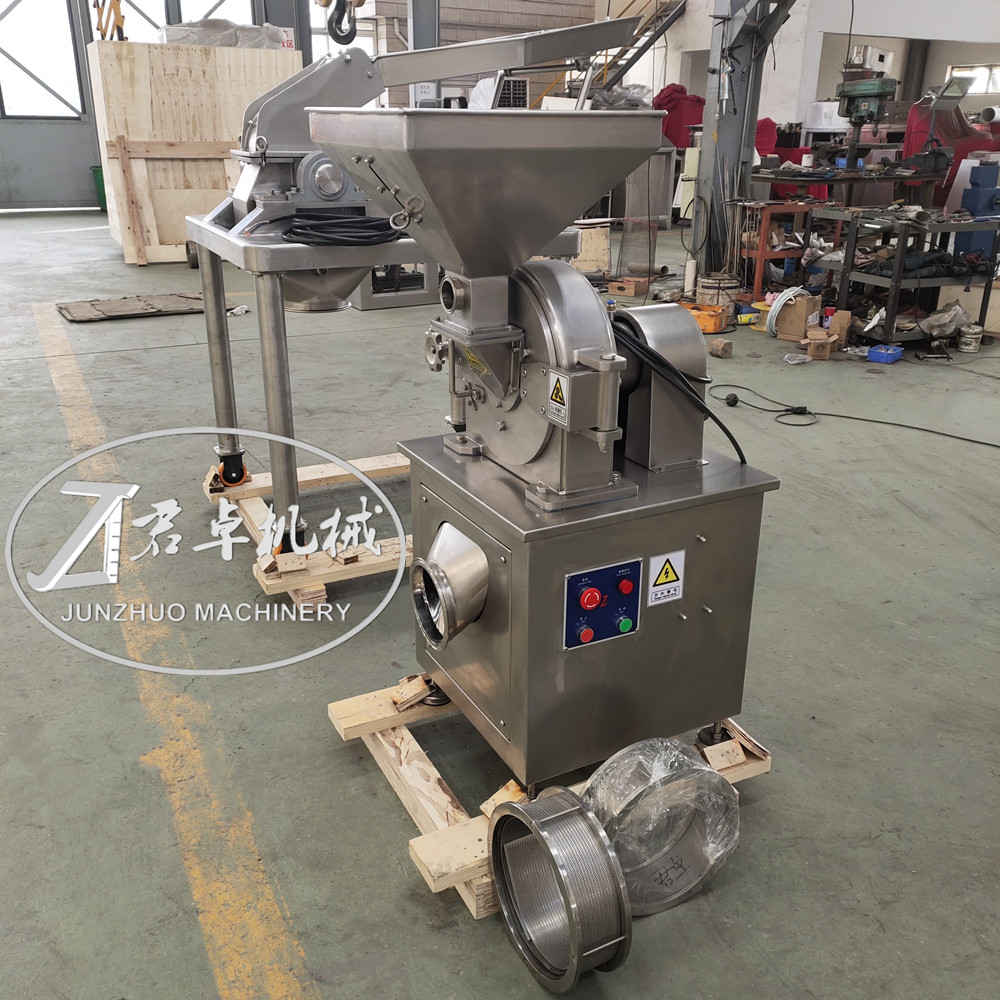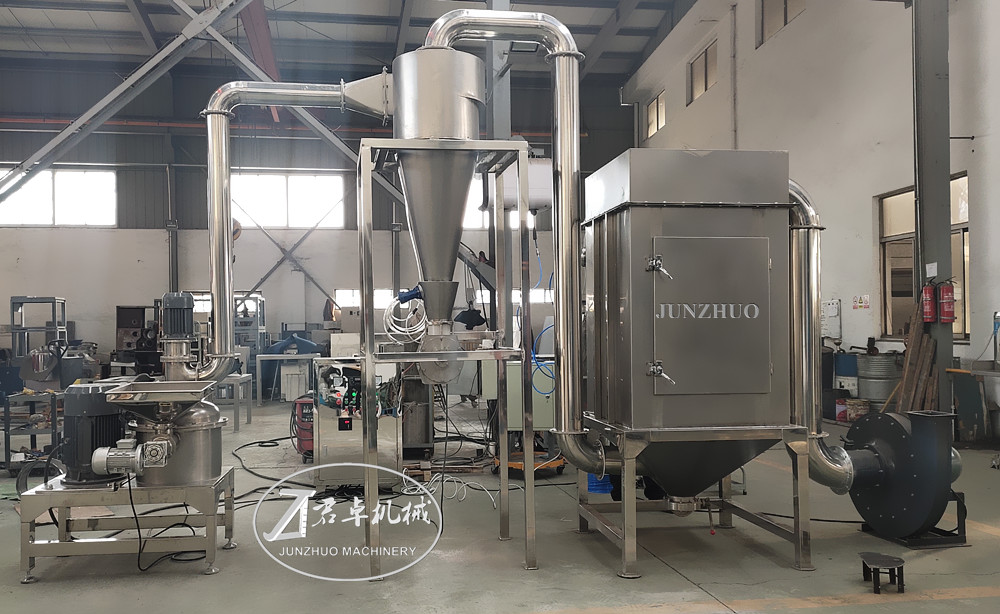Copyright © 2019 JIANGYIN JUNZHUO MACHINERY MANUFACTURING CO., LTD All Rights Reserved. Site MapDesigned by iwonder.cn
 jz@junzhuojx.com
jz@junzhuojx.com
 +86-0510-86382380
+86-0510-86382380
When choosing a pulverizer, the following factors need to be comprehensively considered:
1. Analyze Material Characteristics (The Most Important Factor)
Hardness
High-hardness materials (e.g., ceramics, metal oxides, certain minerals): Prioritize equipment based on extrusion and impact principles, such as jaw crushers, cone crushers, or impact crushers. Avoid grinding-based equipment, as wear will be severe.
Medium-to-low hardness materials (most chemical raw materials, food, Chinese herbal medicines): A wide range of options is available, including universal crushers, hammer mills, and turbo crushers.
Toughness/Fibrous
Tough, fibrous, or flexible materials (e.g., plant roots/rhizomes, plastics, animal tissue, leather): Shearing force is most effective. Choose turbo crushers or universal crushers (with shear cutter heads). Never use extrusion-type crushers—they tend to press materials into flakes rather than powder.
Brittleness
Brittle materials (e.g., most crystals, grains, brittle minerals): Almost all types of equipment are suitable, especially impact crushers (e.g., hammer mills, universal crushers) which offer the highest efficiency.
Moisture & Fat Content
Materials with high moisture (>15%) or high fat (>5%) are prone to adhesion, clogging screens and chambers. Select high-speed crushers with powerful wall-breaking capabilities and screen-cleaning devices (e.g., turbo crushers), or use cryogenic crushing technology. Drying or degreasing may be required beforehand.
Heat Sensitivity
Will the material decompose, melt, or deteriorate when heated? If yes, choose low-speed shear crushers or equipment that can introduce cooling media (e.g., jet mills, which use compressed air expansion for refrigeration).
2. Define Process Requirements
Target Particle Size
Coarse/medium crushing (output >5mm):Coarse crushers are suitable.
Fine crushing (output 150μm–5mm): The most common range; universal crushers and hammer mills are the primary choices.
Ultrafine crushing (output<150μm, down to micron level): Select ultra-fine crushers, jet mills, ball mills, or vibration mills.
Capacity Requirements
Laboratory/R&D: Small-scale equipment with capacities from a few grams per hour to tens of kilograms per hour.
Small-to-medium batch production:Medium-sized equipment with capacities from tens to hundreds of kilograms per hour.
Large-scale continuous production: Large, automated equipment with capacities measured in tons per hour. Capacity directly determines the equipment model and size.
Feeding & Discharging Methods
Feeding: Manual feeding or automatic feeding with screw conveyors/vibrating feeders?
Discharging: Direct discharge or negative-pressure conveying to the next process (e.g., screening, mixing)? This determines whether the equipment needs an integrated conveying system.
3. Evaluate Other Key Factors
Cleaning & Sanitation Requirements
Pharmaceutical/food industry: Must choose GMP-compliant equipment made of 316L stainless steel with high surface finish for easy disassembly and thorough cleaning.
Chemical industry: Also requires easy cleaning to prevent cross-contamination, but standards may be slightly lower than those for pharmaceutical/food applications.
Safety & Explosion-Proof
When processing flammable and explosive dust (e.g., metal powder, flour, certain chemicals), the equipment must have an explosion-proof design.
Budget
Acquisition cost: Prices vary significantly by principle and equipment size.
Operating cost: Includes energy consumption, replacement of wear parts, labor costs, etc.
Summary
The key to selecting a crusher lies in:
Matching equipment principles to material properties (e.g., shear for fibrous materials, impact for brittle materials).
Aligning equipment specifications with process demands (target particle size, capacity, feeding/discharging).
Considering industry-specific requirements (cleanliness, safety, budget).
By systematically analyzing these factors, you can select a crusher that balances efficiency, cost, and compliance with production needs.
By continuing to use the site you agree to our privacy policy Terms and Conditions.